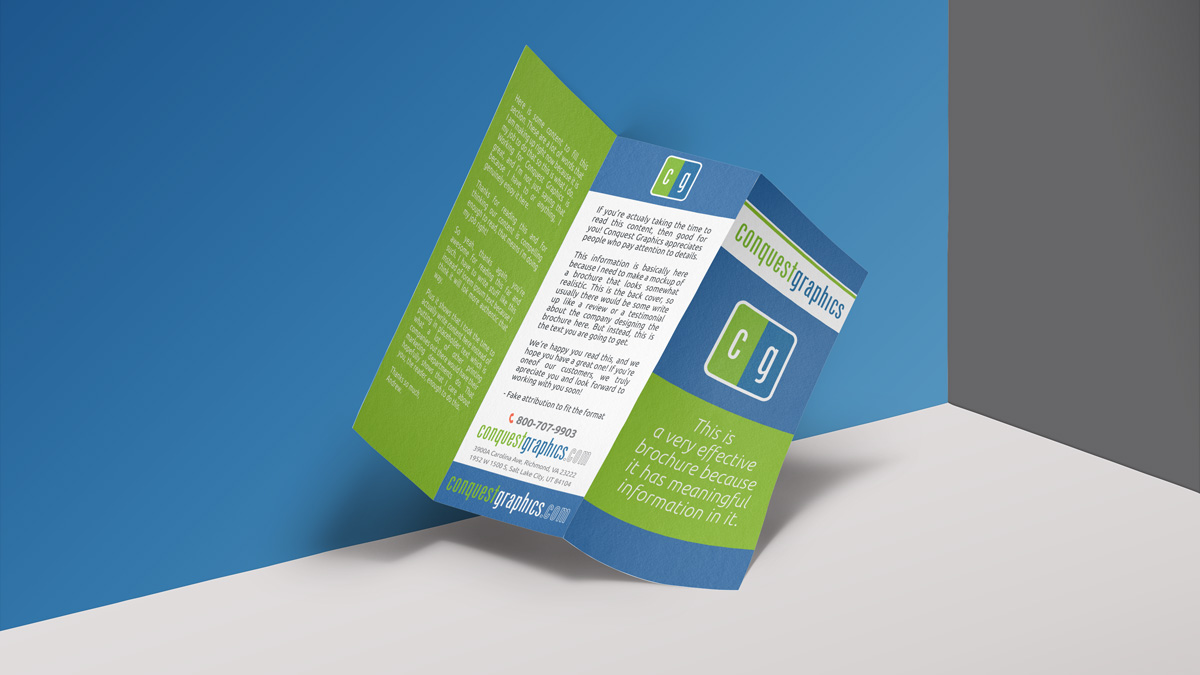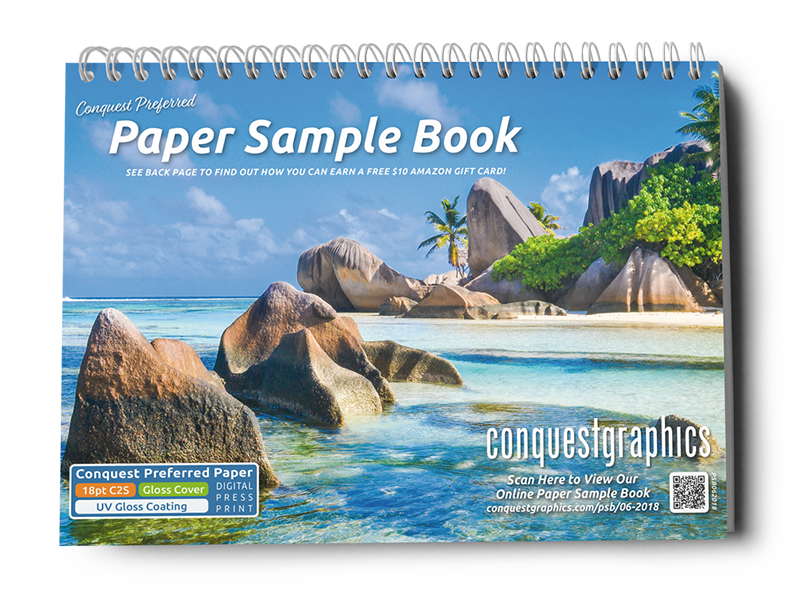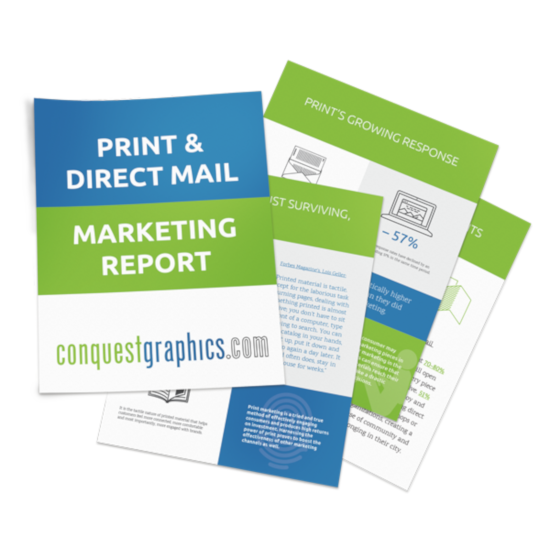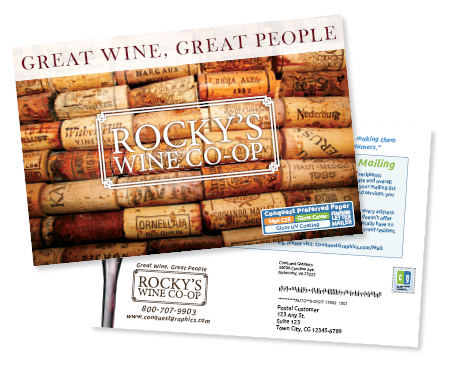
It’s easy to make an effective brochure when you have lots of money to spend, but here we help you make an effective marketing brochure on a tight budget.
When it comes to planning and designing an effective marketing brochure, the multitude of possible starting points can be overwhelming, and this ultimately scares many away from even starting.
Instead of taking the time to develop an approach and really think things through, what do most big companies do? Often, they decide to just pay for it.
While money can sometimes equate to quality marketing for some brands, it comes at a steep cost to small businesses who don’t have many of the resources larger companies have when it comes to marketing and branding.
So, what really makes the difference between an ineffective and an effective marketing brochure?
All strong marketing brochures have five key things in common. By addressing each of these elements in the following five-step guide, any organization, big or small, can make a truly effective brochure that reflects their brand’s public image and voice in a way that’s meaningful to their customers.
1. Know Your Product and Know Your Customers
If you’ve ever taken a class or attended a training session in marketing, you’ve probably heard this bit of advice before: know everything there is to know about your customers and about your product.

This is the perfect launching point for developing an effective marketing brochure. Coming to understand everything about the product you’re selling and the people you’re selling it to is essential, and it forms the basis of your marketing message, which is the very essence of your marketing brochure.
2. Only Show Your Customers the Things About Your Product That You Know Will Sell It to Them
Knowing exactly what your customers' needs and wants are allows you to better know exactly what it is about your product that will appeal most to them. This can then help you form an idea of the copy and images that should go in your brochure so they appeal to the right people.
One key thing to do here is to make sure you’re not just showing off what you’re proudest of about your product or service.
Lots of small businesses make this exact error, and that’s what is usually the tell-tale sign to consumers that something is coming from a “less professional” source than some larger sourcing options when purchasing goods.
While you may be proud of your new manufacturing facility, putting it on the cover of your brochure when you’re trying to sell the products you produce inside the facility would be a huge mistake. When making an effective marketing brochure, it’s important to remember you’re selling a product, not your company.
Also, don’t just write down what interests you personally about your product. Inform your marketing copy by using actual data and research from interviews with customers and prospects. Don’t just guess at what your customers want about your product. Know exactly what they need and want that you can provide.
Use this same information to inform your image selection. Choose really appealing pictures of your product that actually stand out to real customers. In rare instances, using customer-submitted images of your product is appropriate for demonstrating what your customers find truly appealing about your product. Make sure you ask for permission to use your customer’s image first, though!
Pro tip: To get yourself started, make a list of all the possible details about your product you can think of. Then make a list of all the things your customers want. Think of every single type of customer you can and think of conversations you’ve had with them in the past. What kind of people are they? What do they need and want? Make a list of your answers to these questions. Then using your first two lists, make a third list that overlaps the two. This should be used as the final “features” list that you use when describing your product in your marketing brochure. This will ensure the list addresses the right things about your product that will actually appeal to your customers.
3. Make Sure the Final Edition of Your Brochure Is Concise, Clean and Professional in Its Presentation

This is where a little expenditure may be important. Paying for a designer to help you with laying out the marketing copy and images you came up with in the previous two steps is far cheaper than hiring an agency to do all the steps for you.
Someone doing a layout or brochure design for you makes the entire process far easier. People familiar with the right software just need the desired dimensions of your finished product, the folding specifications, the actual information you want to include, and that’s all. Just leave the rest to them!
If you’re capable of designing the brochure yourself, make sure you lay it out in a way that makes sense and follows a clear logical progression.
Most customers read through brochures in a certain direction and with a certain strategy: reading headlines first to see if the information is applicable, then going back and reading the sections they thought seemed applicable to them.
The end goal of having a clean design is for your customers and prospects to have an easy-to-use brochure that informs their purchasing decisions and makes your product as appealing to them as possible so as to spark their desires and emotional interests.
4. Make Sure the Next Steps Are Clearly Defined and Easy to Do
Whether it’s motivating your customer to go to your web store, make a phone call or visit your physical location, every effective marketing brochure has some sort of call to action (CTA). And it doesn’t just have to be one, although keep in mind that it’s good to be concise if you want to keep your customers’ and prospects’ attention.
Once you’ve shown your reader everything that’s awesome about a product or service you offer, make sure the steps are clearly outlined so they can understand how they should go about actually getting the product or using the service. This is, after all, the ultimate goal of effective marketing brochures, so absolutely do not forget this step, or else all your work was for nothing.
This is a dangerous step to miss for another key reason, as well. If you miss it, customers could feel alienated or confused, and that’s not good for your brand in the future. You have to avoid this possibility at all costs, so make sure you don’t forget this step!
5. Always Have Safety Nets and Make Sure Your Customers Are Aware of Them
To convince the customers who may still be on the fence, provide some sort of logical safety net so they don’t feel like there’s any risk in taking the actions suggested in your CTA.
Safety nets include policies like money-back guarantees and customer satisfaction assurances. Always make sure you run these kinds of policies by someone with legal experience first to make sure you’re not accidentally binding yourself to anything too ridiculous or impossible to meet.
Now that you’ve checked each of these five steps to be sure you’ve got all the right elements, you should have an awesome, effective marketing brochure. If you’re still in need of a commercial printer, consider Conquest Graphics for your brochure printing needs. Whether you want glossy, matte or satin finishes or even just uncoated prints, Conquest Graphics can do it all.









